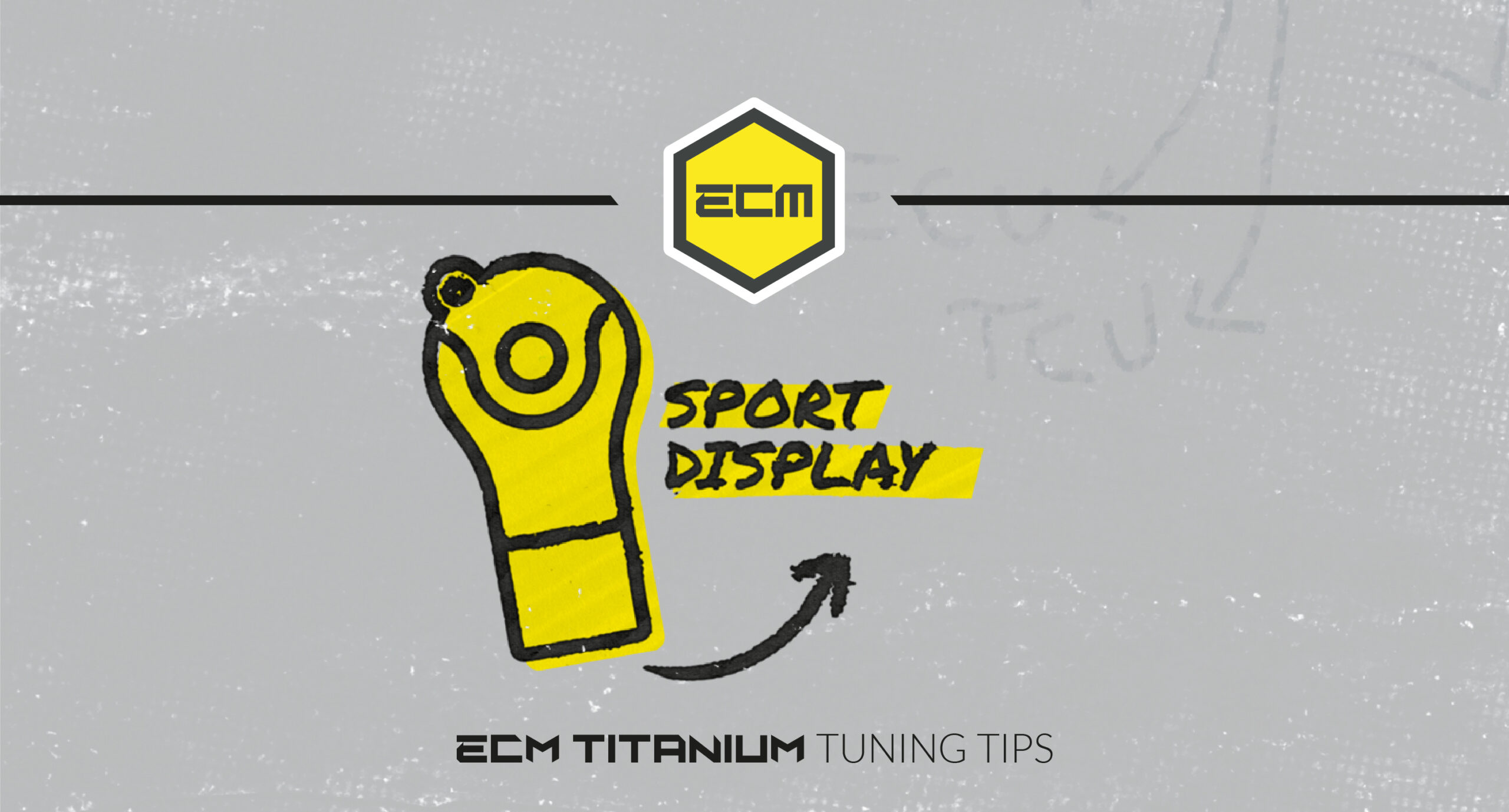
Sport Display Recalibration – ECM Titanium tuning tips
Sport Display Recalibration – ECM Titanium tuning tips
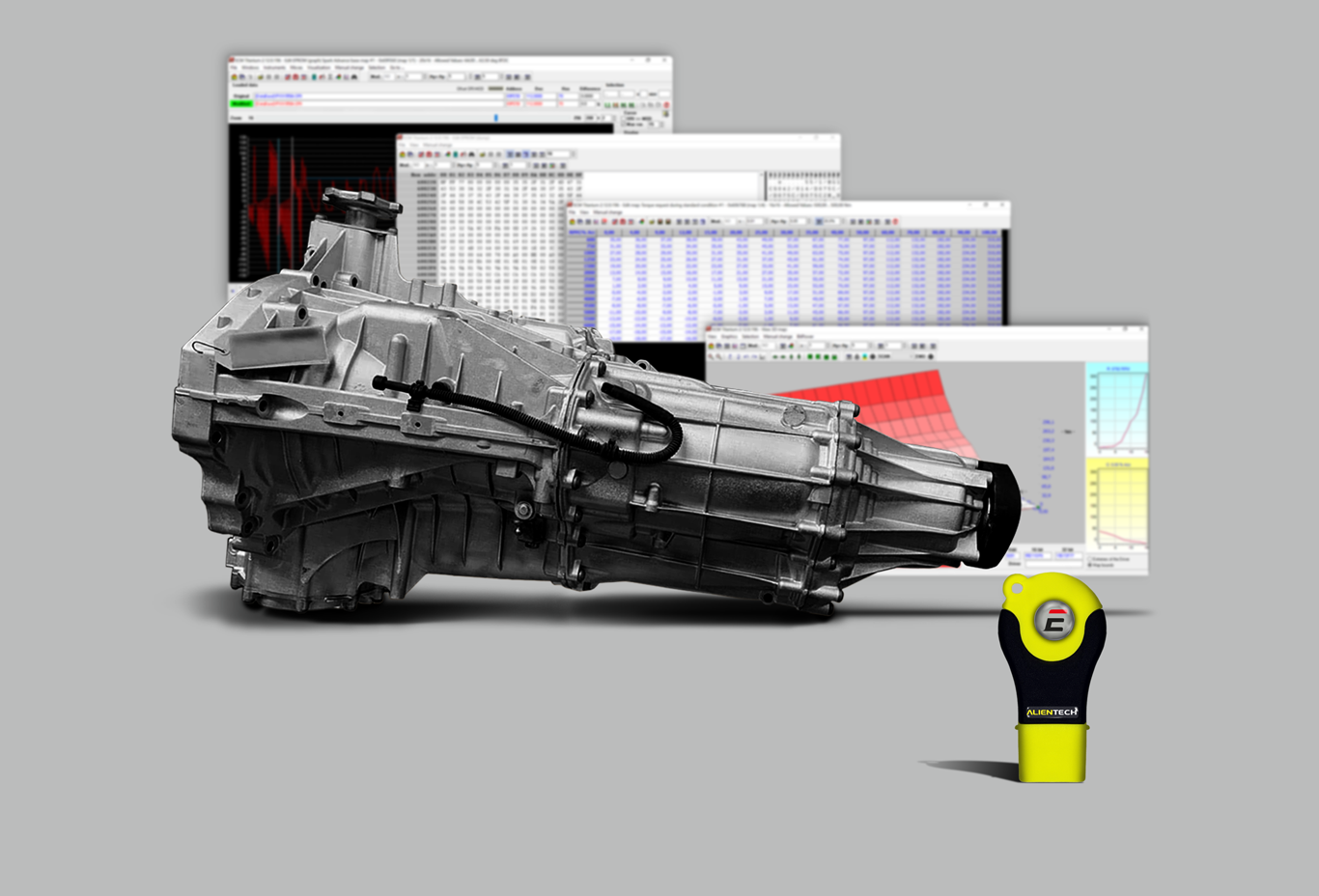
By recalibrating the TCU management file, the vehicles performances will be noticeably better and the guide experience even more personal. Your customers will be more and more satisfied.
The available parameters, common among the TCUS models, introduced with the recent update are:
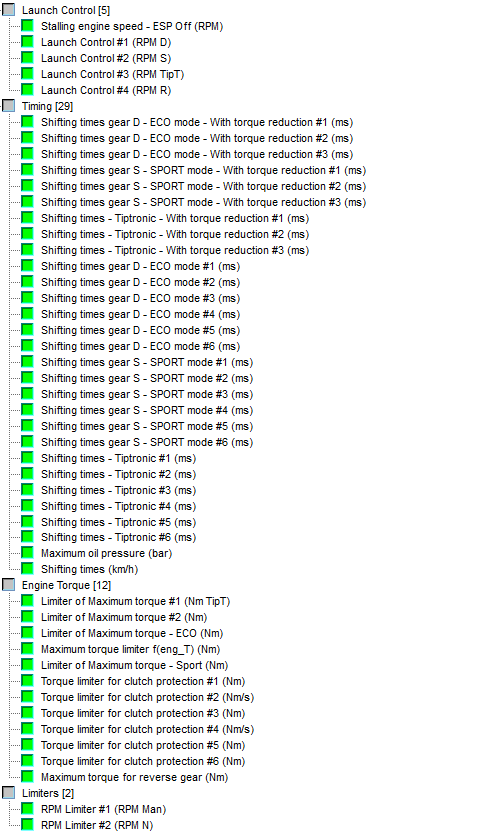
In TCUs that does not manage the shifting points according to RPM, there is a shifting point management according to speed. The functioning of these maps is the same as the RPM ones, but in this case, TCU uses speed as reference to shift to the next or previous gear.
This map has some “particular” axes:
• On rows axis we have the shifting from 1st to 7th gear and then from 7th to 1st;
• On column axis we have the accelerator pedal percentage.
In this map every row can be intended as a single map managing every single map according to accelerator pedal.

These maps manage the maximum revs the engine reaches when the Launch Control mode is engaged.
Generally, on VAG group vehicles, this mode is only enabled with gear lever on “S” mode and with traction control disabled.
Once we have the previous conditions, we need to push the brake pedal and, on the cockpit, we will see the message telling us the Launch Control Mode is active.
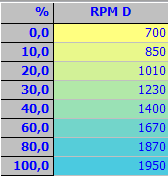
These are the maps managing the oil pressure of the hydraulic clutch actuator.
They generally are used to avoid clutch slipping once the car has an increase in torque amount.

We need to define properly the Cxx and Exx/Fxx families of DQ250 gearboxes. These two managements are from two different generations.
Gearbox is almost identical (both gearboxes are DSG6), but we have different mechatronics managing the gear shifting.
In Cxx case we have older mechatronic (Golf MK5 generation, from 2005 to 2010), in Exx/Fxx we have a newer management (Golf MK6 generation). Software is different among Cxx and Exx/Fxx also if they are the same DQ250 gearbox.
Note: for the TCU TEMIC DQ250 EXX/FXX gearbox is possible to edit the FastOff function that we will present in a more detailed way in the dedicated section of the TEMIC DL501 gearbox.
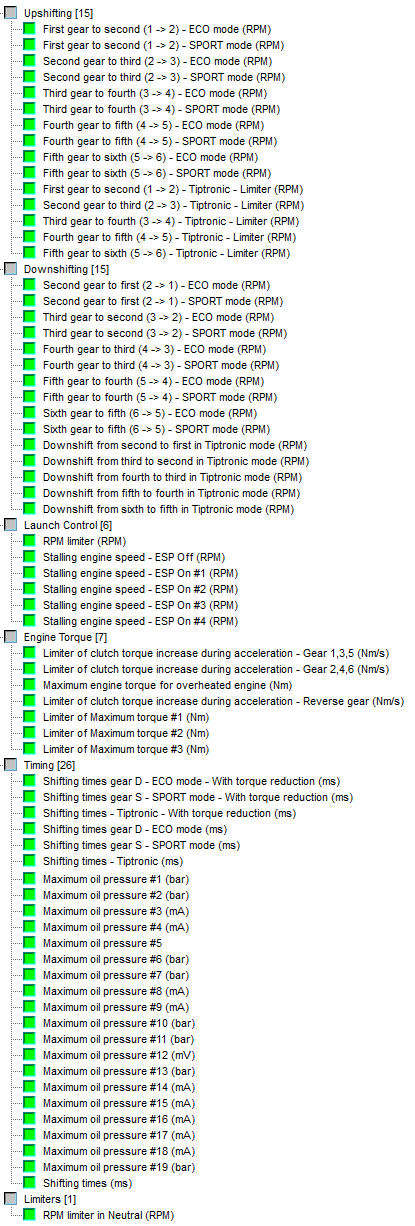
These maps are managing, according to the driving mode, the gear shift (up and downshift).
By modifying these maps, it is possible to change the engine RPM where the gearbox shift to the next or previous gear, according to the torque calculated by the TCU and the accelerator pedal position. We can see that the percentage on throttle position is higher than 100%, this because of the kickdown function.

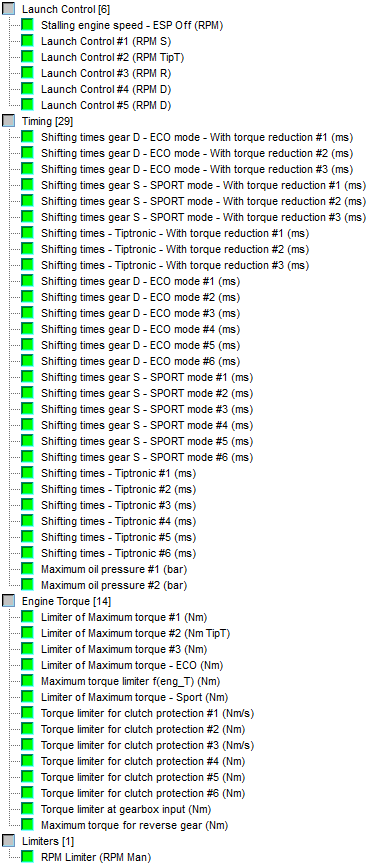
These maps manage the shifting times according to the various driving modes.
They are working according to the accelerator pedal percentage and the gear engaged. For every gear, according to how much we push the throttle we have a specific shifting time.
By reducing this time, we will have a quicker gear shift, but also the driving it’ll be less comfortable. Obviously in sport when you are pushing hard the engine gear shifts are faster.


On some calibration we have the FastOff management: this function is enabled once the accelerator pedal is suddenly released and again pressed. By increasing the value in this map, we can reduce the engine RPMs drop and improve the accelerator responsiveness during acceleration.
On some calibrations we have also the Maximum number of Launch control. This map is managing the maximum limit of times driver can enable the L.C. mode before TCU disables it permanently. This happens because TCU tries to protect the gearbox components (clutch and differential in particular) and avoid possible gearbox breakdown because of the stress caused by the Launch Control starts.
In the next few weeks, Drivers update on Bosch MED17.7.2 equipped on Mercedes-Benz gasoline. Any examples?
Also, Infiniti mounts Mercedes motors on Q30, QX30, Q50 and Q60 from 1600cc with 122 and 156cv up to 2000cc with 211cv.

Sport Display Recalibration – ECM Titanium tuning tips
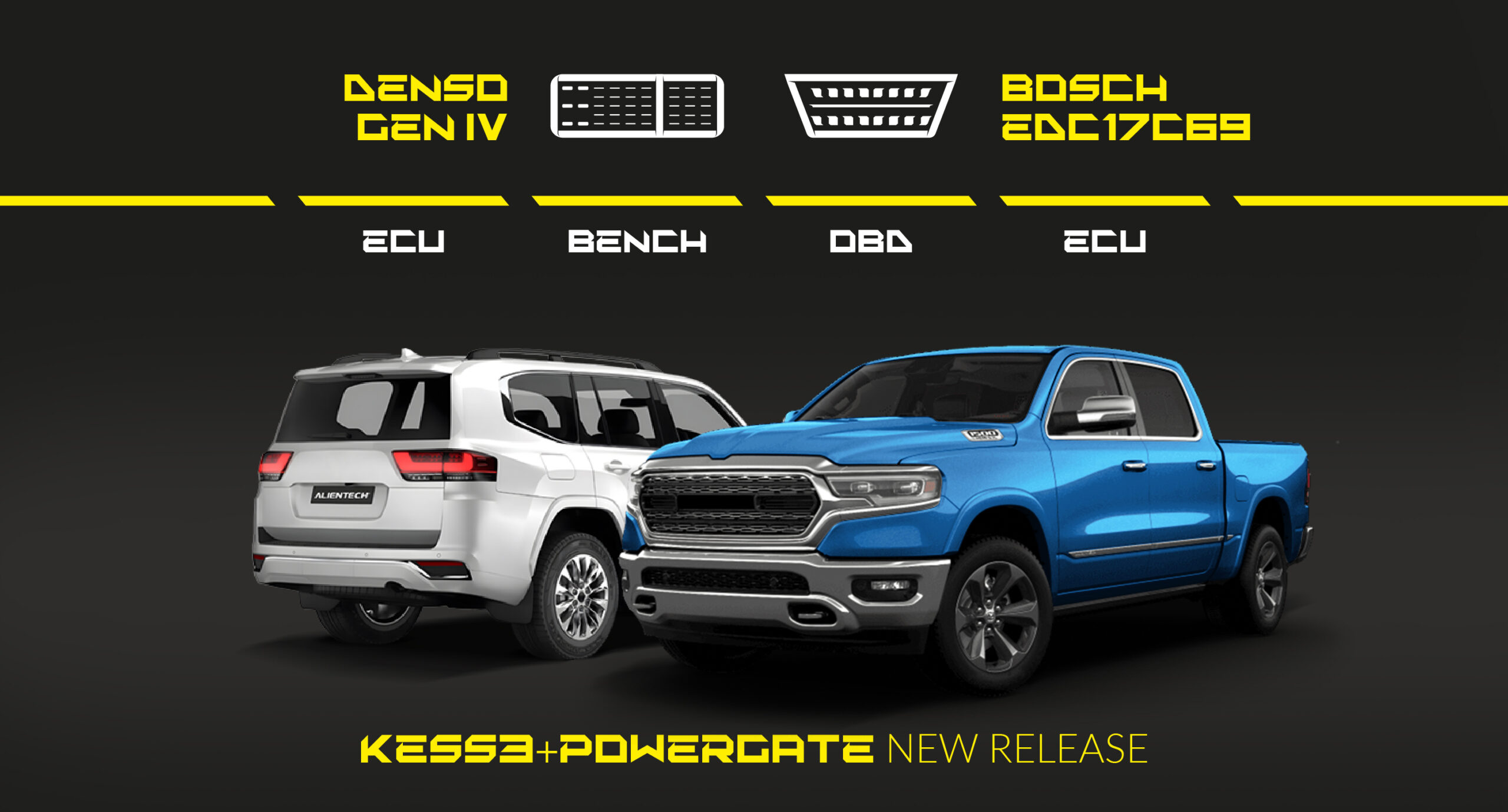
This new major development allows you to work on the Denso GEN IV R7F702002 V35A-FTS ECUs, installed in several off-road Toyota and Lexus models, as well as on 19 other control units, including both ECUs and TCUs.
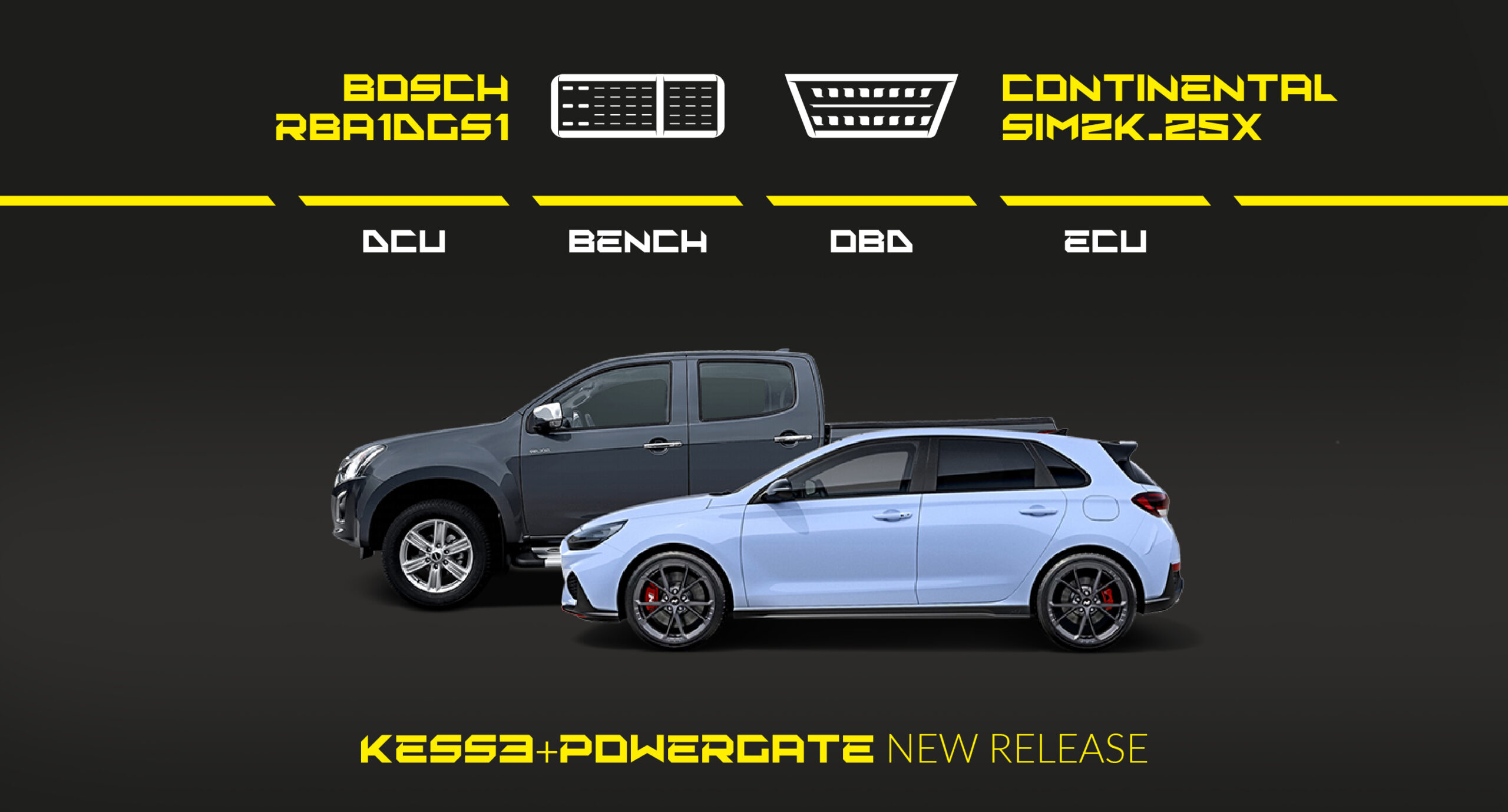
Operate in all connection modes with 18 new protocols dedicated to the automotive world. This is one of the largest releases for KESS3: now expand your workshop’s intervention capabilities.
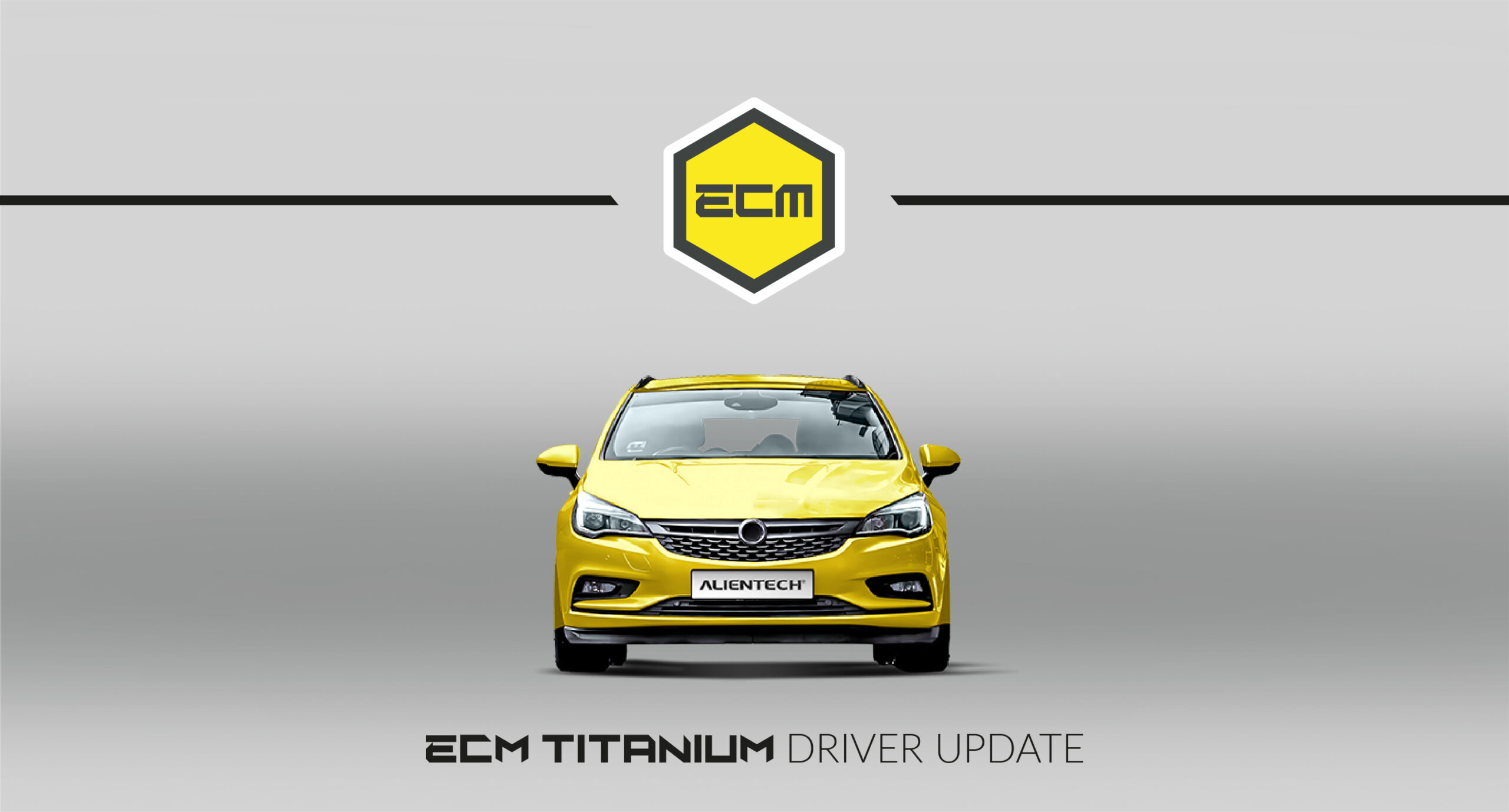
Easily and effectively modify engine parameters for several Chevrolet, Holden, and Opel vehicles.
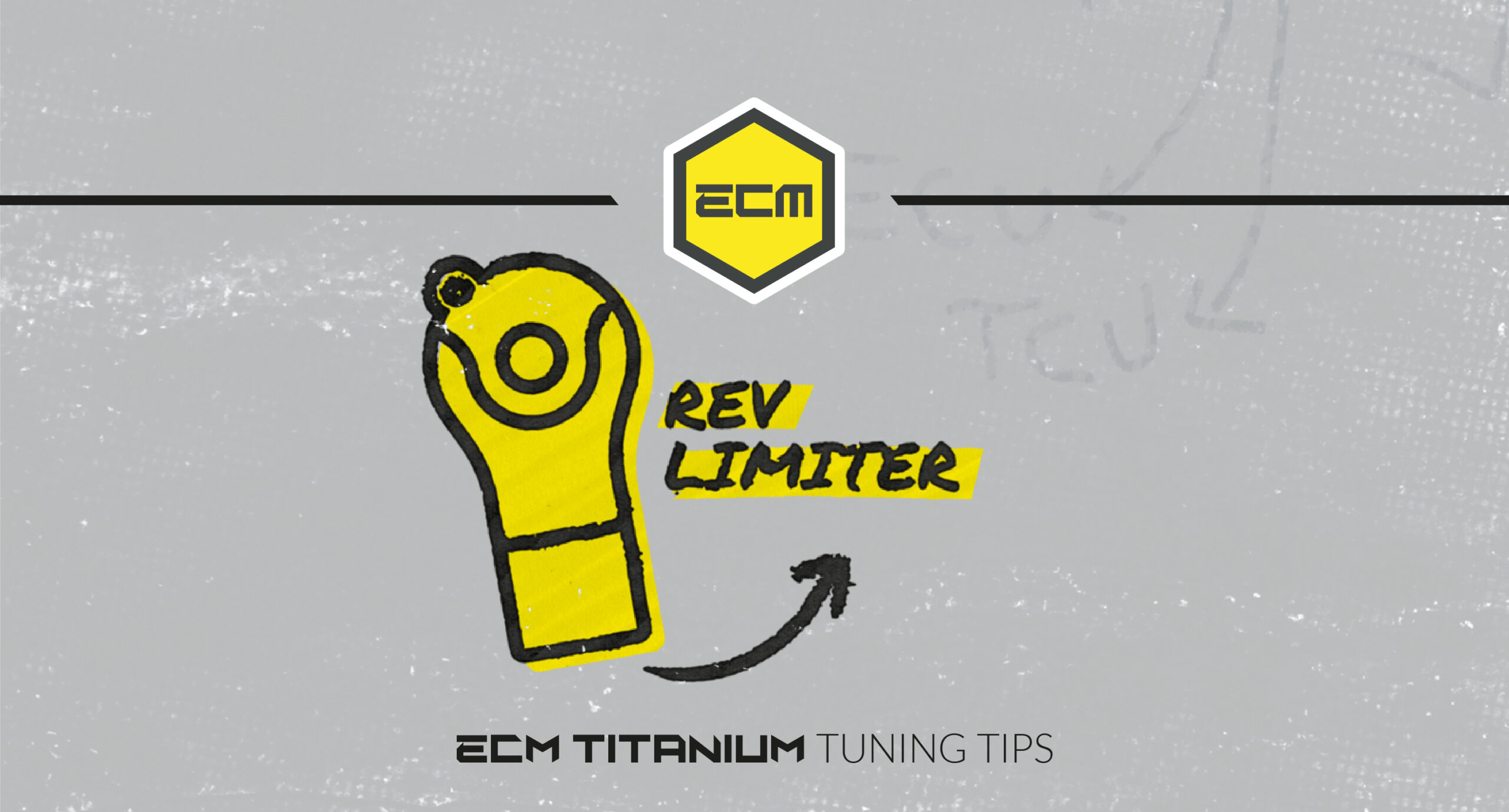
REV limiter – Diesel – ECM Titanium tuning tips